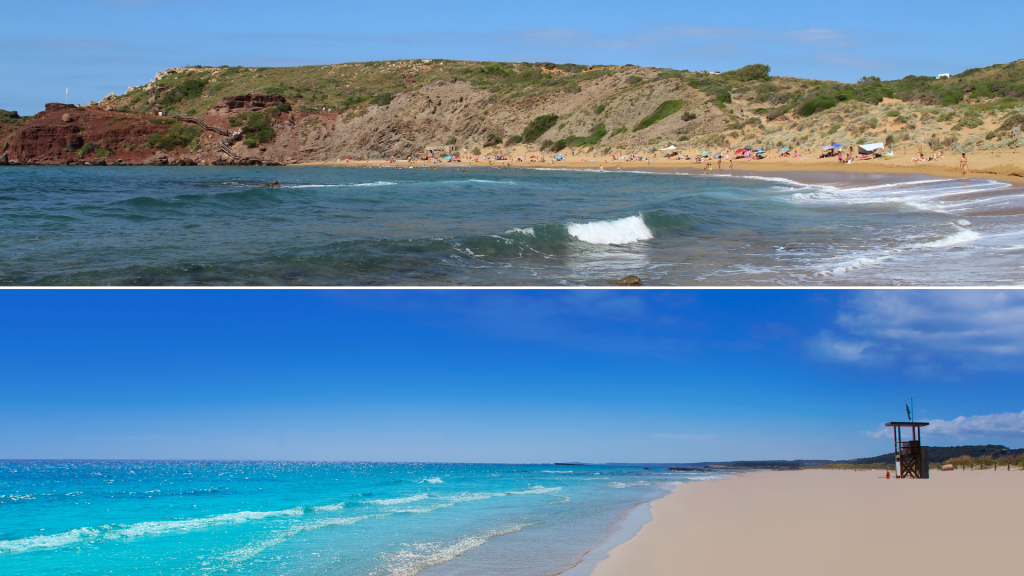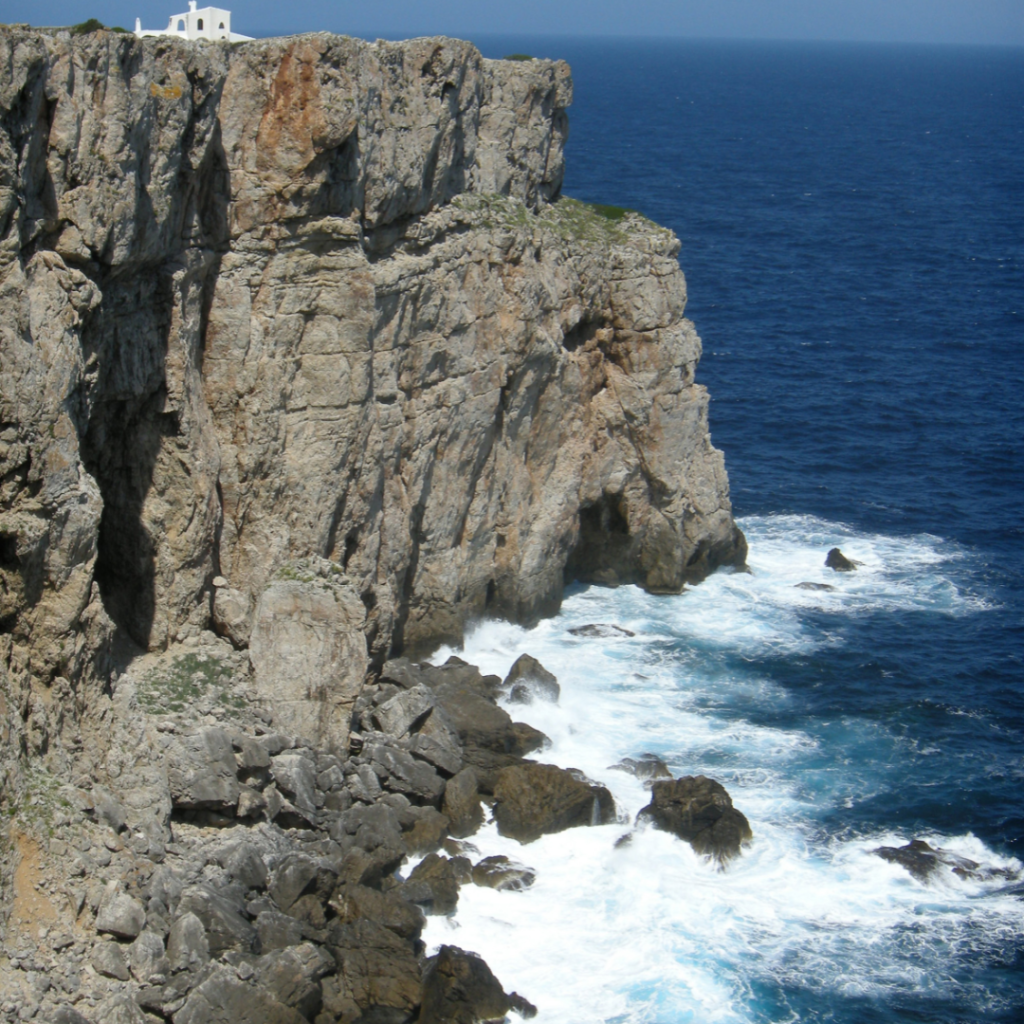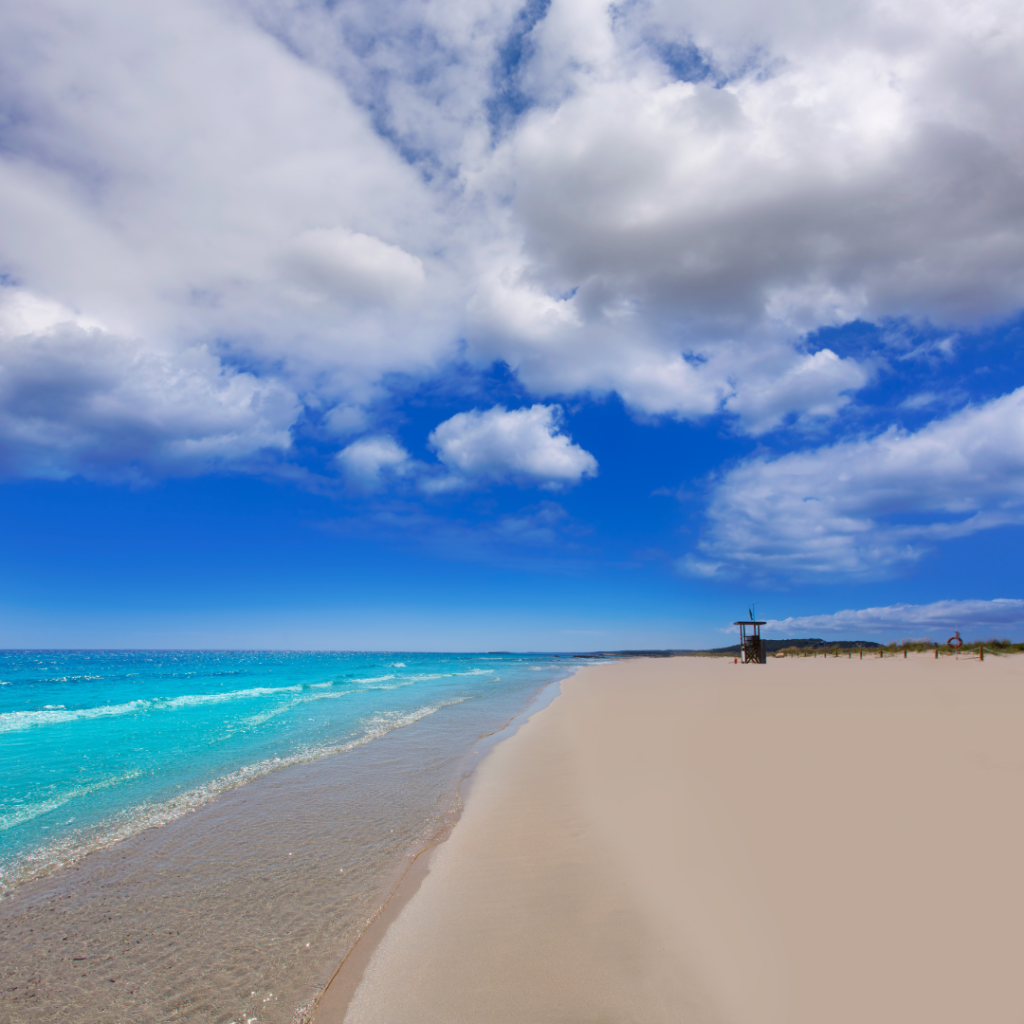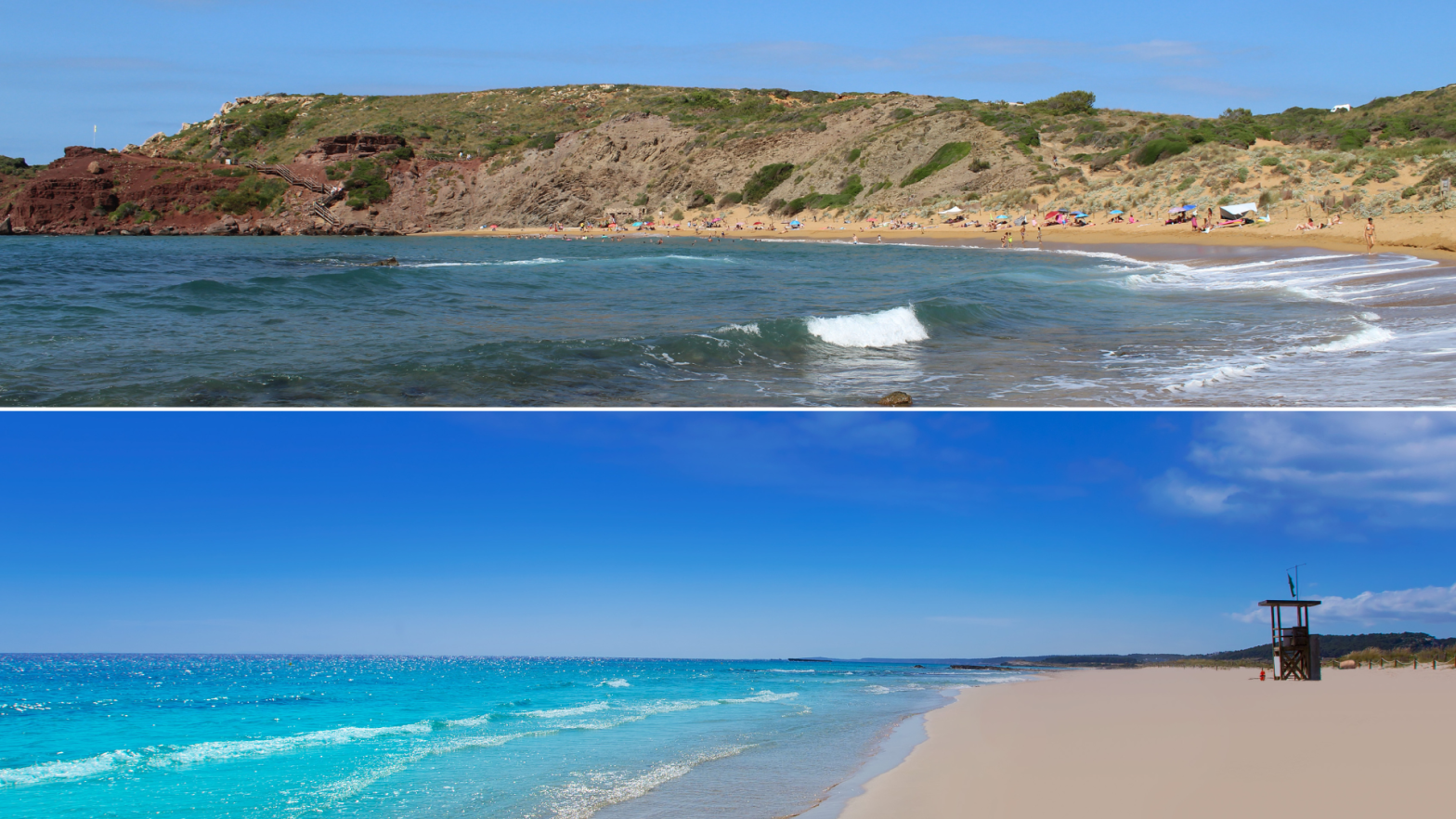Why are the North and South of Menorca So Different? This is surely a question you’ve asked yourself if you’ve visited or plan to visit Menorca. Today, we’ll tell you why.

If you’ve visited or plan to visit our beloved island of Menorca, you’ll have noticed that the north and south are entirely distinct to the human eye. So much so that if we didn’t know where we were, we might not even guess we are on the same island. Right? And do you know what causes such differences? Why does the north resemble a rugged lunar landscape with rocky cliffs, while the south resembles the Caribbean with its soft white sandy beaches and crystal-clear waters? Join us, and we’ll explain why…
Two Phases, One Destiny: The Formation of Menorca
The creation of Menorca dates back millions of years, divided into two distinct geological phases that have left an indelible mark on its current morphology. If we were to draw a straight line from southeast to northeast (specifically from the entrance of the Port of Mahón towards Ciutadella until the surroundings of Algaiarens), dividing the island, we would see the two regions that, from a geological point of view, are completely different, created at two different moments in Menorca’s history. These regions are known as Tramontana and Migjorn.
The North Coast of Minorca: Witness to the Force of the Sea

The Tramontana area is distinguished by hosting the oldest materials on the island. Its rocks display fractures and folds, forming a complex network of diverse terrains composed mainly of conglomerates, sandstones, clays, and limestones from the Paleozoic era, along with dolomites, marls, and limestones from the Mesozoic era. Hence its dark reddish color is reminiscent of a Martian or lunar landscape.
Furthermore, exploring the north coast of Menorca, we encounter a rugged and dramatic landscape, sculpted by the relentless force of the Mediterranean Sea. The vertical cliffs and whimsical rock formations result from millions of years of erosion and geological modeling. Here, the sea crashes forcefully against the coast, carving out caves and grottos that harbor a rich marine biodiversity.
The South Zone of Minorca: Gentle Relief and Fine Sandy Beaches

On the other hand, in the «Migjorn» region lies what is possibly the most significant rock formation in Menorca, the Miocene marl, although other types such as conglomerates also appear. These rock formations create a practically horizontal platform, slightly inclined towards the sea and marked by numerous ravines, eroding the rock and forming a river network that flows into beautiful coves. Examples include the beaches of Macarella, Turqueta, Mitjana, Trebalúger, or Son bou/Santo Tomás. These beaches are the result of the deposition of marine sediments over long periods, creating a tranquil and peaceful environment ideal for relaxation.
An Encounter of Two Worlds
The differences between the north and south coasts of Menorca reflect the two geological phases that shaped the island. While the north coast exhibits the indomitable force of the sea, the south coast invites us to immerse ourselves in the serenity of its white sandy beaches. This encounter of two geological worlds reminds us of the richness and diversity of Menorca’s natural heritage, an island that continues to amaze those fortunate enough to explore it.
So the next time you find yourself contemplating the beauty of Menorca, remember that you’re admiring the result of millions of years of geological history, a legacy that leaves us breathless and invites us to protect and preserve this natural treasure for future generations.
